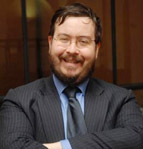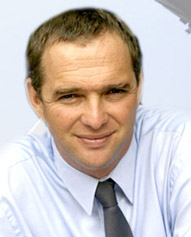Innovation in an Asian context – Mattia Miani (Executive Education – RMIT Vietnam) Interviews Andrew Grant on Creative thinking
A CONVERSATION WITH ANDREW GRANT
By Mattia Miani
October 9th, 2013
INTRODUCTION
I asked Andrew for an interview because he has extensive experience in creativity training and facilitation in the Asia Pacific region that is where I am currently based. I am personally interested in understanding the cross-cultural validity of creativity theories and this conversation was “solid gold”.
From his company’s website (www.tirian.com) here’s a concise profile of Andrew:
Andrew Grant is the CEO of Tirian, author of Who Killed Creativity? … And How Can We Get It Back? (Wiley 2012), and creative designer of Tirian programs. Andrew has been a keynote presenter and executive level facilitator in over 15 countries, and has successfully worked with over 30 different nationalities. Previously, as a lecturer in Education at the Central Philippines University, Andrew worked on breakthrough education projects across Asia.
He has also worked pro bono with aid groups in El Salvador, Thailand and tribal India. In 1996 he worked with the International and Indian Schools Total Health Program and helped to produce a health program that today is now reaching over 25 million children worldwide.
THE INTERVIEW
I am not relating verbatim the content of the interview; rather, I will provide the main insights Andrew conveyed answering my “trigger” questions.
1) How did you come to creativity? & What is your approach to creativity training?
Interestingly enough, Andrew’s background is in education and instructional design. The background in education clearly emerges from the readings and theoretical references mentioned by Andrew during the interview: instead of the “usual suspects” of creativity practice (i.e. De Bono or Von Oech), Andrew is more keen on recalling pedagogical and sociological classics such as The Pedagogy of the Oppressed or Stages of Faith.
I have noticed that a background in education is not unusual for people who later specialize in creativity facilitation, but the discussion with Andrew added something new. Recalling his many experiences as an instructional designer and teacher (in particular an assignment in India on health communication), Andrew made very clear that, according to his experience, the number one challenge that an educator faces is to keep pupils interested and engaged. This holds especially true with adults. We simply cannot expect that learner will come to us full of energy and eager to learn.
In other words, Andrew is framing teaching as a creative profession, something it is difficult to argue against, but also something that most teachers tend to forget.
2) To what extent do you think creativity tools and concepts have cross-cultural validity?
In answering this question, Andrew recalled the seminal book Stages of Faith and emphasized that “all learning is about discovering, not simply rote learning”.
In his practice Andrew also developed a creativity process broken down in seven main steps. However, one of the foci of his approach that we discussed in more depth is the role of blockers. “You cannot really train in creativity if you do not address blockers, says Andrews, and people have a myriad of excuses to claim that they are not creative.”
To better understand blockers Andrew has incorporated in his practice research from organisational behaviour, psychology and neuroscience. In the discussion I could recognize a reference to the theory of the Triune Brain: when we let the “reptilian brain” impulses to take over there is no way that we can be creative and unfortunately this is more the norm, rather than the exception, in corporate settings.
Blockers are an important starting point for any creativity training and were fully explored in his book Who Killed Creativity? … And How Can We Get It Back? and in many of the educational products and scenarios he designed.
For Andrew, training in creativity also means switching from the “consultant” approach (where everything revolves around expertise brought in by the consultant) to process facilitation.
Andrew also explained what is behind the title of his book: in his training he has adopted the metaphor of crime scene investigation (where the victim is creativity). Just another example of how to make training engaging and “sticky”.
In discussing creativity, Andrew mentioned author Jared Diamond that in an interesting play on words had to remark that Invention Is the Mother Of Necessity. Andrew pointed out an article published by Diamond on the New York Times Magazine where the historians write: “The technological breakthroughs leading to great inventions usually come from totally unrelated areas. Our widespread misunderstanding of inventors as setting out to solve society’s problems causes us to say that necessity is the mother of invention. Actually, invention is the mother of necessity, by creating needs that we never felt before. All too often, however, the world fails to realize that neither the solutions to most difficult problems of technology nor the potential uses of most basic research discoveries have been predictable in advance. Instead, penicillin, X-rays and many other modern wonders were discovered accidentally — by tinkerers driven by curiosity.”
3) What can be the role of expats be in developing and emerging economies in Asia?
Finally we talked extensively about the cross-cultural validity of creativity concepts, mostly developed in North America and Europe (and usually tested on “sophomores”…).
I specifically asked Andrew about his experiences in Asia and I mentioned a book authored by Ng Aik-Kwang, a scholar based in Singapore who gained his PhD in Australia, provocatively titled Why Asians are Less Creative than Westerners. Aik-Kwang thesis is that cultural differences matter and the focus on status quo and harmony in Asian cultures is detrimental to creative thinking.
Andrew elaborated the theme in a more complex way. He pointed out that Singapore has grown to become universally known as one of most innovative creative countries in the world. Even more astonishingly, China’s history is full of great inventions (Chinese historians refer to them as the Four Great Inventions: compass, gunpowder, papermaking, printing). “So, the real question is, why did they stop? Why do not we have more invented in China, but mostly made in China today?”
As you might expect we were not able to fully answer this question during our interview, but focusing on this question can help overcoming common stereotypes. For Andrew, one explanation could come from the work of Richard Florida on creative cities: Florida years ago showed that creative cities usually prominently display three attributes: technology, tolerance, and talent. Singapore, in a way, has them all (i.e. ability to attract global talent, a focus on ICT and, in its way, a tolerant climate that allowed three different ethnicities to prosper together). Probably China is now missing at least one of the elements of the equation.
There is also an historic dimension to keep in mind. Nowadays we are accustomed to regard the “Western world” and in particular North America as the homeland of innovation, but, whiles this assumption is probably questionable even today, certainly did not hold true in the past. There have been moments in history in which China and India were ahead of the curve and leading the rest of the world in terms of creative potential and commercial innovation.
Some interesting insights, according to Andrew, come from the nonfiction bestseller Guns, Germs, and Steel by Jared Diamond. The author notes that historically, when countries become too conservative they tend to discard technological innovation. On the other side, wealth can bring complacency.
Andrew also recognized that some elements of the Asian culture can be detrimental to creative thinking. In particular it is a well know fact that in most Asian educational systems kids are not encouraged to ask questions, being inquisitive (because of the Confucian respect associated with the elderly and teachers). Teachers are seen as the only expert, when they should be more facilitators. Clearly this goes against creative and critical thinking.
4) What can be the role of expats in developing and emerging economies in South East Asia?
Andrew recognized that there can be tensions from local workforce and expats (usually in management positions) in these countries. But this tension can be a positive one and bring renewal in the local workforce.
Andrew related a story of a German manager working in Singapore and complaining about his subordinates. For the German manager the problem was that his staff did not have a problem! In other words, they were not challenging his indications. To him this was worrying because he was raised in a culture in which the boss is not infallible.
CONCLUSIONS AND GENERALIZATIONS
The conversation with Andrew was really fulfilling and provided me with a number of insights.
In the first place, I liked the connection between teaching and creativity. Many educators do not realize it, but teaching is really a creative profession. There is no good teaching without creativity applied to delivery and preparation.
In the second place, I found very interesting to remind myself that China and India used to rule the world in terms of innovation. While it is easy, nowadays, to focus on the elements that hinder creativity in Asia, such as the educational techniques, clearly these elements, alone, do not explain the all phenomenon. China has had the same educational system based on Confucian values for centuries, but in the past was able to be a very innovative country. Clearly there are other socioeconomic dimensions that contribute to define the overall creative climate of a country and Florida may be right.
Finally, I think the conversation will induce me to study the topic of blockers and creativity squelchers more carefully. My take-away from the conversation is that blockers are, so to speak, the first building block of every creativity training.
Note.
The article of Jared Diamond can be found at this url : http://partners.nytimes.com/library/magazine/millennium/m1/diamond.html
 Mattia Miani is a Manager of Executive Education at RMIT Vietnam where he also lecturer in the University’s EMBA. From 2003 to 2010 he has been working in Italy as a lecturer at the business school of the University of Bologna and as a marketing consultant and entrepreneur advising cooperative enterprises, advertising agencies, and government organisations on their communication strategies. From 2008 to 2011 Mr Miani has served as a director in the board of the Centre for Training and Initiative on Cooperative Enterprise and Business Ethics, a joint venture between the University of Bologna and the Italian cooperative movement.
Mattia Miani is a Manager of Executive Education at RMIT Vietnam where he also lecturer in the University’s EMBA. From 2003 to 2010 he has been working in Italy as a lecturer at the business school of the University of Bologna and as a marketing consultant and entrepreneur advising cooperative enterprises, advertising agencies, and government organisations on their communication strategies. From 2008 to 2011 Mr Miani has served as a director in the board of the Centre for Training and Initiative on Cooperative Enterprise and Business Ethics, a joint venture between the University of Bologna and the Italian cooperative movement.
Mr Miani is author of four books on marketing communication, with a special focus on new media. His research interests include creativity, ethics, social enterprise, and consumer behaviour. He is now enrolled in the Graduate Certificate in Creativity and Change Leadership at the New York University at Buffalo (NY).



